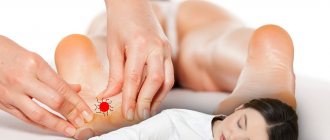A stroke is a reactive, acute disruption of the blood supply to the brain, accompanied by the rapid appearance of foci of necrosis. Depending on the time during which blood circulation is not restored to normal levels, the general prognosis of the patient’s life depends. The patient can die within hours. What a person’s life depends on, symptoms, stages, how they die from a stroke - all this is described in detail below.
Classifications of strokes
In practice, a simple classification is used, distinguishing two forms of stroke depending on the causes that gave rise to the hemorrhage: ischemic and hemorrhagic. In addition, stroke periods and severity levels are distinguished.
Ischemic stroke
Statistically, it occurs more often, up to 85% of all cases, appearing as a result of the closure of the lumens of blood vessels that supply a certain part of the brain. Closure of the vessel can occur due to a blood clot, atherosclerotic plaque, or due to narrowing of the walls due to severe spasm.
This type of stroke does not occur overnight. It develops progressively, one pathological process follows another.
- Blood flow decreases.
- There is a sharp release of glutamate and aspartate, excitotoxicity occurs (a pathological process that leads to serious damage and death of nerve cells under the influence of neurotransmitters).
- Calcium accumulates inside each cell.
- The activation of intracellular enzymes increases, the lack of oxygen progresses, and foci of local inflammation arise.
- Brain neurons die.
All stages occur with increasing cerebral edema, cells increase in volume, and intracranial pressure indicators increase. Because of this, local parts of the brain - the temporal lobes - are displaced, the midbrain is pinched, which leads to compression of the medulla oblongata (due to the entry of the cerebellum into the foramen magnum). With this development, death from a stroke is most often stated.
Hemorrhagic stroke
This form of stroke was once called “apoplexy.” Registered in 15% of cases. Formed due to a rupture of the vessel wall or an aneurysm. The cause may be a sharp jump in blood pressure or pathology in the walls of the vessels themselves. Spontaneous hemorrhage occurs in the brain tissue (in the subarachnoid space).
Hemorrhagic stroke occurs due to increased physical or emotional stress. If, after exertion, you feel severe headaches, your surroundings appear reddish, and nausea occurs, you can talk about the preconditions for a stroke.
With such a pathology that occurs in the brain stem, a person does not live more than 48 hours. He dies without regaining consciousness. External signs of death from a stroke: pale skin, sensations of approaching death, one half of the body, on the side where there was hemorrhage, is dark purple. This is one of the specific external manifestations of death from a stroke.
Periods of stroke
Cerebrovascular accident occurs over several periods.
- The most acute phase.
- Spicy.
- Early recovery period after stroke.
- Late recovery period after hemorrhage.
- Complications and consequences of hemorrhage.
- Long-term consequences.
Death most often occurs during the hyperacute and acute phases.
Severity
Depending on the size of the area of brain damage, there are three degrees of stroke severity.
- Small stroke (micro-stroke). Neurological pathologies appear, the symptoms are not expressed, they can be confused with manifestations of other fatal diseases.
- Light to medium severity. Focal symptoms can be observed; there are no signs of altered consciousness or cerebral edema.
- Severe degree. The patient is unconscious, neurological disorders progress rapidly, and severe cerebral edema occurs. This condition ends in death.
Important! Stroke is a dynamic process. The sooner the patient receives adequate, highly qualified medical care, the greater the likelihood of restoring the full range of brain functions. Hospitalization is necessary in the first three hours after detection of hemorrhage to prevent death.
Duration of coma
The duration of a coma can be very different: from several hours to several days or weeks. Some patients die without regaining consciousness. Rarely does a patient remain in a coma for several months, a year, or more. But the chances of recovery after such a long coma are extremely low.
A quick exit is more likely when:
- moderate area of necrosis;
- ischemic nature of stroke;
- partial preservation of reflexes;
- young age of the patient.
Statistical data
Death due to stroke and signs of the early stage of the disease are being recorded more and more often in Russia. Stroke is rapidly getting younger. Factors affecting the unfavorable environmental situation in large cities, constant stressful situations at work and at home, and abuse of alcohol and tobacco products. In world practice, stroke ranks third in the overall statistics of all deaths, in Russia it ranks second.
A higher percentage of mortality is recorded from the hemorrhagic form of cerebral hemorrhage.
| View | Mortality percentage |
| Ischemic | 12-17% |
| Intracerebral hemorrhage | 53-83% |
| Subarachnoid | 33-65% |
The gender distribution of risk, or how men and women die from stroke, is as follows:
- death from stroke in women occurs in more than 43% of cases;
- men die less often – 36.6%.
Rehabilitation and prevention play an important role, because statistically the highest percentage of mortality is recorded after a recurrent stroke.
For information. Only 59.9% of patients who apply receive qualified and timely assistance. The rest self-medicate (34%), others do not receive help at all (5.7%).
Prognosis after ischemic, hemorrhagic
Cerebral hemorrhage usually occurs in a more severe form. The mortality rate in such patients reaches 70%; even after removal of the hematoma, the rate is not much lower. Unfavorable factors include:
- breakthrough of blood into the ventricles of the brain;
- uncontrolled arterial hypertension;
- large volume of hematoma;
- progressive cerebral edema;
- signs of displacement of the stem part;
- acute heart failure;
- increase in creatinine content in the blood;
- convulsive syndrome, lack of consciousness, reactions to painful stimuli for more than 3 days;
- age after 70 years.
With ischemic stroke, a more benign course is observed; it is rarely accompanied by a profound impairment of consciousness. This happens with repeated vascular accidents, massive blockage of the brain arteries with cholesterol plaques, lack of treatment or complete disregard of doctors’ recommendations.
Blockage of arteries in the brain
Precoma and the first degree of coma can still give the patient a chance for recovery; with a higher degree, the prognosis is considered doubtful, and the onset of extreme coma is usually regarded as fatal.
Causes of stroke
The main causes of death in stroke (risk factors) include the following human conditions:
- an increase in blood pressure is permanently recorded, which also indicates an increase in intracranial pressure;
- hereditary factor: strokes have been reported in close relatives;
- excess body weight;
- smoking and alcohol abuse;
- vegetative-vascular diseases;
- a history of aneurysm;
- sedentary lifestyle (in bedridden patients, the risk of stroke increases);
- diseases of diabetes mellitus and atherosclerosis;
- paroxysmal headaches, and very severe ones;
- periodic numbness of any part of the body or face;
- the appearance of a dark veil before the eyes, temporary loss of vision;
- attacks of unexpected weakness.
Symptoms of a stroke
Sudden focal neurological symptoms in combination with meningeal manifestations indicate the presence of an acute, severe disorder of cerebral circulation. The brain, not receiving enough oxygen and nutrients due to impaired blood supply, begins to change destructively; at first these changes are reversible, then these processes can no longer be reversed. That is why every person should know the signs of the disease and what death from a stroke looks like in order to provide timely help to a loved one or passerby. These symptoms include:
- an attack of severe headache or dizziness;
- paralysis of a part of the face or body, expressed in slurred speech, inability to control one’s movements, and impaired fine motor skills;
- loss of consciousness;
- various types of paresis;
- sudden complete or partial loss of vision;
- severe excess of normal pressure indicators;
- open vomiting and nausea;
- problems with the perception of surrounding reality;
- involuntary bowel movements or urination.
Important! If you suspect a stroke, you need to ask the person to smile, raise their hands up and say a simple phrase. If one of the corners of the mouth “slides” down, forming a crooked smile, the tongue “twists” during speech, and you cannot raise your hands, then urgent professional help is needed. In this situation, delay is like death.
A diagnosis can only be made by carefully studying the general clinical picture, medical history, risk factors, and neurological symptoms.
External signs of death from stroke
It is possible to determine that a person who has suffered a stroke is close to the end by external signs that indicate irreversible processes in the brain. Harbingers of approaching death are:
- disturbance of consciousness;
- unsteady gait, sweeping movements;
- the patient cannot speak, move, open or close his eyes;
- swallowing reflex is absent;
- there is inadequate motor activity, convulsions, twitching of the arms and legs, more like convulsions;
- increased body temperature - more than 40 degrees (indicates damage to neurons that regulate thermodynamics);
- eye movements are disturbed - by lifting the eyelid, you can see that the eyes seem to “float”, the pupil on the side of the hemorrhage is greatly dilated;
- high blood pressure, increased heart rate, bradycardia;
- appetite is reduced, stool is scanty and harder;
- urine is more concentrated and its quantity decreases;
- deep noisy breathing (Kussmauel breathing type), there are long pauses between inhalation and exhalation;
- breathing is sometimes deep, sometimes shallow.
How does a person feel
There is no clear and uniform answer to the question of how a person feels while in a coma. But scientists have recorded brain activity when visiting relatives or changes in breathing and heartbeat when trying to communicate with a patient. Many relatives wonder: can a person in a coma hear them?
The people themselves who have experienced such an experience describe their sensations differently: some were conscious, but could not show it, some saw various dreams, and some communicated with deceased loved ones; there are also cases when patients couldn't remember anything.
What does clinical death from a stroke look like?
If the ischemic process progresses, the prognosis will be unfavorable. There are three main signs (conditions) by which clinical death is determined. The first 4 minutes are decisive. After establishing the symptoms of clinical death, resuscitation measures are taken. If they are unsuccessful, the onset of biological death is recorded.
Additionally, the table shows what death from a stroke looks like.
| State | Short description |
| Coma |
|
| Apnea | Complete absence of respiratory activity, no respiratory movements of the chest. |
| Asystole |
|
Death after acute hemorrhage in the brain area can be caused by various reasons (from pulmonary edema to cardiac arrest). Only prevention of any pathologies of the cardiovascular system, blood supply, nervous system, a healthy lifestyle, as well as early diagnosis of stroke can help reduce the rate of death from cerebral hemorrhage.
An important role is played by the provision of competent assistance at the level of the local clinic, since often with the first symptoms of a stroke the patient turns to the doctor of this particular medical institution.
results
Mortality rates for SAH.
The 1-, 7- and 28-day mortality rates for SAH in 2010 increased by an average of 1.6 times compared to 2009 (Fig. 1).
Rice.
1. Dynamics of mortality rates in SAH. From 2010 to 2021, these indicators had a general downward trend. Thus, the 1-day mortality rate in 2010-2011. was at the level of 11.0%. In 2012, mortality decreased by 4 times compared to 2011. In 2013-2015. there was a further decrease in the rate, and in 2016 there were no patients with 1-day mortality with SAH. By 2021, compared to 2010, 7-day mortality decreased by 4.9 times, 28-day mortality by 2.6 times. Mortality rates for ICH.
In 2010, compared to 2009, there was a tendency for the 1-day mortality rate for ICH to increase by 1.4 times (Fig. 2).
Rice. 2. Dynamics of mortality rates in ICH. Then, in the period from 2010 to 2015, it decreased 14 times - from 12.4 to 0.9% ( p
<0.001).
Its slight increase (0.3%) was registered in 2013, in 2014-2015. - decrease from 2.7 to 0.9%, and in 2021 - increase again to the level of 2014. The 7-day mortality rate in 2010 increased by 1.1 times compared to 2009. In the period 2010-2016. it was revealed that it decreased by 2 times - from 33.6 to 16.0% ( p
= 0.005).
The 28-day mortality rate decreased by 1.9 times: from 46.1% in 2009 to 23.9% in 2021 ( p
= 0.001). In 2013, there was a slight (0.9%) increase in the mortality rate compared to 2012.
Mortality rates in IS.
According to those shown in Fig. 3 data
Rice. 3. Dynamics of mortality rates in IS. it can be seen that during the study period there was a decrease in mortality in IS: 1-day - from 6.9% to 1.3%, 7-day - from 13.3 to 3.3%, 28-day - from 21.2 to 7.6%. There was a slight increase in 1, 7 and 28-day mortality rates for IS in 2014 compared to previous years. In 2021, there was a decrease in mortality compared to 2015: by 2.2% - 1-day, by 4.2% - 7-day, by 4.6% - 28-day.











